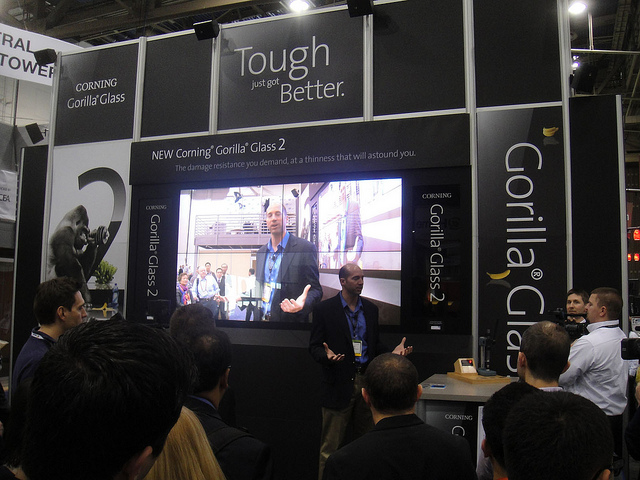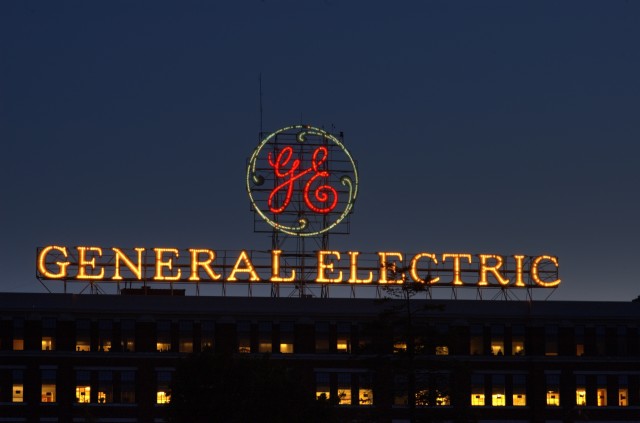From Google (15 years old) to Corning (162): Companies that change our world.
The history of the tech industry is littered with the dead—companies that rode a wave of innovation and wiped out hard. Some rode core successes for years, such as Wang, Digital Equipment, and Palm. Others, like Pets.com, crashed early and hard because of failures in execution.
The number of companies that have survived the cross-currents of innovation to undergo reinvention again and again is startlingly small. To celebrate Ars Technica's 15th anniversary, we recently looked at the three most game-changing companies of the last 15 years. Today, we take this exercise further. Ars set out to find 15 companies that have succeeded in shifting from one wave of technological change to the next across a wide swath of the technology sector. These companies range from 15 years old to over 150, but each is a survivor in its own right, adapting to shifts in competition and pushing new innovations forward to stay on top.
Some of the companies we've selected are obvious stand-outs, others have been stealthier in their continued success, and some may even be a little controversial. Here, in order of relative seniority, is what we've dubbed the Frontrunners—our list of 15 companies that have led the way in their markets while continuing to come back for more.
Corning Glass: The 162-year old silicon startup
There aren’t many modern tech companies that can claim roots going back to the mid-19th century, but Corning, Inc. is one of them. The company behind the ubiquitous Gorilla Glass—found in over one billion mobile devices worldwide—was founded in 1851 in Somerville, Massachusetts. (Later, it moved to Williamsburg, Brooklyn, possibly making it the original hipster startup?)
In its most recent annual report, Corning said it expects “double digit market growth for Corning Gorilla Glass, driven by its continued popularity as a cover glass for smartphones and tablets” in 2013. Corning has done very well for itself, profiting over $15 billion from 2008 through 2012.
It’s easy to overlook the importance of something as basic as shatter-resistant glass. But without it, our smartphones and tablets would be far more fragile. Sure, lots of teenagers have figured out how to severely damage their devices’ screens nonetheless, but the fact that devices generally continue to work afterwards is a testament to their durability.
Corning has made glass for observation lenses, windshields, and even invented Pyrex, the heat-resistant cookware. The company also invented the world’s first low-loss optical fiber approximately 40 years ago. Today, Corning offers a range of optical fiber technology products and enhancements for a variety of network applications including fiber-to-the-home access and metropolitan, long-haul, and submarine networks. And if you don’t have a smartphone, Corning Glass sits in more products than you realize, even your television.
Making Gorilla Glass involves dipping sheets of glass into a potassium ion bath. Corning glass, before the bath, is technically known as an alkali-aluminosilicate sheet, but this bath is where its real innovation comes in. By replacing the sodium ions in the alkali-aluminosilicate with potassium ions, it makes the bonds in the glass significantly stronger. The latest iteration, Gorilla Glass 3, was introduced in January 2013.
Surprisingly, the types of glass found on smartphones and other mobile devices account for less than a fifth of the Corning's sales. In its financial documents, the specialty materials division accounted for just 17 percent of the company’s total sales in 2012.
Last year, Corning demonstrated its newest model that may eventually become as widespread as Gorilla Glass. Willow Glass is as thin as a sheet of paper (100 microns) while being flexible enough to be rolled into a tube. If phones that have curved surfaces, like the Samsung Galaxy Nexus and HTC One X, are any indication, this product will be in high demand sooner rather than later.
—Cyrus Farivar
—Cyrus Farivar
General Electric: The original tech giant
Not many legacies loom larger than that of Thomas Edison, who founded GE in 1892. While he remains a controversial figure in science, the brute force of Edison’s career left him with over a thousand patents by the time he died in 1931.
Edison started General Electric to write large the opportunities that were starting to grow out of the business of electricity. By 1895, GE was building 800-kilowatt transformers and some of the largest locomotive trains in operation, weighing in at 90 tons.
GE established itself in Schenectady, New York, where the headquarters still stands, with the first laboratory in the US dedicated exclusively to scientific research. From there, GE went on to build the first electric fan, the first electric toaster (the D-12), the first electric range (the Hotpoint), the first electrically propelled vessel for the US Navy (the USS Jupiter), and the first hermetically sealed home refrigerators. A vacuum tube invented at GE dubbed “the Magnetron” became the basis for microwaves. And this all happened prior to 1920.
Of course, GE did more than invent the majority of your kitchen appliances. The aforementioned Magnetron formed the basis for World War II radar systems. In 1918, GE built a 200kW alternator that powered the first trans-oceanic radio system. In 1927, the first home television broadcast was tramsmitted by GE’s radio station, WGY, to a set located in Schenectady. The company opened its plastics division in 1930 and invented silicone in 1940. GE designed the first American jet engine, the I-A, in 1942 to power the first American jet aircraft, the Bell XP-59 Airacomet.
But the company’s history is not quite as glossy and pure as its highlights reel would have you believe. The company has faced quite a bit of controversy, particularly over its involvement in nuclear power. Back in 1976, three of its scientists resigned over the company’s refusal to acknowledge flaws in the design of its Mark 1 reactor, the same reactor responsible for the Fukushima Daiichi nuclear disaster in 2011. The 1991 film Deadly Deception documented GE’s involvement in researching and creating nuclear weapons, a practice that some consumers boycotted by refusing to buy GE-made lightbulbs in the 80s and 90s. GE discontinued its involvement in that industry in 1992.
In recent years, GE has continued to expand its involvement in many areas of scientific research. It built the Mars Observer in 1992 and helped repair the International Space Station. The company is also still pursuing new lightning technology with the development of roll-to-roll manufacturing for cheaper LEDs as well as an LED bulb that uses 77 percent less energy than its incandescent equivalent and lasts 22 years.
—Casey Johnston
—Casey Johnston
IBM: From punch cards to Watson
Miles vs. Watson: The complete man against machine showdown
There is no more storied name in tech than IBM. The New York-based company celebrated its 100th birthday in 2011, and over its century of operation it's had an effect on just about everything. The punched-card tabulating machines that enabled the United States to enact the Social Security Act of 1935 were produced by IBM. The mainframes that came to dominate computing in the 1960s were made by IBM. The Saturn V rocket that took humans to the moon was steered by IBM computers. The desktop PC revolution of the 1980s was eventually won by IBM (and by its Microsoft and Intel allies).
The company isn't as broad in scope as something like General Electric, but it does make a little bit of everything—hardware, software, and most especially services. IBM today is a sprawling entity. It's a cornerstone of the Dow Jones Industrial Index with net income of more than $17 billion per year and an operating presence on six continents. Its distinctive logo is a bold traditionalist standout in a world increasingly dominated by abstract sameness. Its three letters are rendered in blue horizontal striping that evokes a formal dress shirt—or a computer print-out. The company's nickname, "Big Blue," has been the same for decades, and an aphorism came about in the 1950s in response to IBM's dominance of the nascent computing machine field: "Nobody ever got fired for buying IBM."
I cut my teeth on an IBM 5150 personal computer with dual floppy drives and 512KB of RAM in the 1980s, kicking off a life-long love of computers. Their PC business was only a small fraction of their total portfolio. The company has been a massive player in the private sector and as a government contractor; it has produced computers both whole and piecemeal. Its supercomputers are showcases of power, solving complex computational problems and also beating humans at chess and Jeopardy. One of its largest revenue sources these days is in services—the IBM Global Services provides everything from consulting to big implementations to full-scale IT department sourcing—indeed, Léo Apotheker's disastrous turn at the helm of rival Hewlett-Packard included an attempt to develop a consulting and services division in the style of IBM Global Services.
—Lee Hutchinson
—Lee Hutchinson
Listing image by Aurich Lawson





0 comments:
Post a Comment